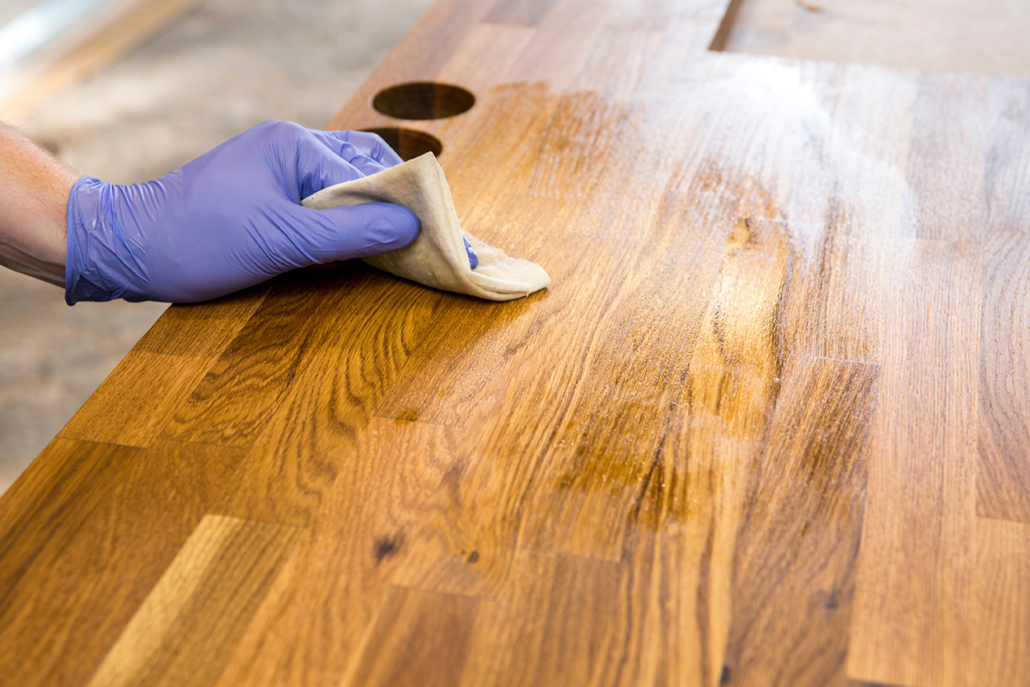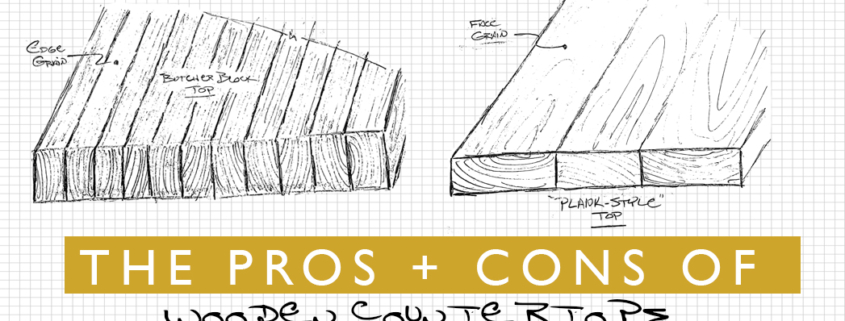Wooden Countertops: How Do Plank Countertops and Butcher Block Stack Up
Thinking of redoing your kitchen countertops, but not sure which countertop material to go with?
There are plenty of options out there, but choosing one doesn’t have to be overwhelming. Before you get started on that kitchen remodel, write down a list of your needs and wants… and then, make sure you know the ins and outs of each option.
If you’ve made it here, you’ve likely been considering wooden countertops. Let’s take a look at butcher block and plank style wood countertops – both extremely popular choices that might just be the perfect option for your new kitchen counters.
Wood Countertop Pros and Cons
Pros
-
- Classic, warm appearance
- A natural home improvement element that reduces stress
- Able to be repaired, re-sanded and restained
- Can be customized based on your style preference
- Long-lasting compared to many materials, such as laminate
Cons
-
- Not as heat-resistant as some countertop materials
- Some species are prone to warping in moist environments
- Some species are less durable, resulting in dents and imperfections
Why Go With Wood Countertops?

One of the biggest reasons people go with wood countertops is their natural beauty. While natural stone countertops are also beautiful, there’s no replacement for how real wood interior design elements make you feel.
There’s just something about the look that elevates kitchen design!
While you want to be careful setting down those hot pots on wooden countertops, they’re still a highly durable (sought-after) and cost-effective countertop surface.
Wood Countertops Compared to Other Countertop Materials

Quartz countertops and granite countertops are obviously more resistant to warping and water damage than wood butcher block or plank countertops. But, the good news is that you can protect your wood countertops!
Simply do a DIY application of food-safe mineral oil or tung oil if you’re using the surface for food prep. Wood countertops that don’t encounter much use (like kitchen islands) or ones that are in wet environments can be stained and finished with a reliable sealant.
While stainless steel and stone are more resistant to nicks, dents, and burn marks, these issues can still be addressed with wood countertop surfaces – refinishing can bring the product back to life (and restore its natural beauty).
Certain wood types, like maple, are extremely durable and are hard enough to be used as cutting boards. For countertops, numerous species can be used, but always keep the Janka Hardness Scale in mind.
Types of Wood Countertops: Get All the Details
Wood countertops offer a lot of versatility when it comes to design style. You can choose between different wood species, grain patterns, stains and more so that your countertop seamlessly accents your home!
Butcher block countertops and plank countertops are extremely popular in kitchen design. And, while they’re both made from natural wood, their appearance and functionality differ.
The Ins and Outs of Butcher Block

Butcher block countertops are most often made by gluing together boards that are laid on their side (edge grain) to create a solid surface. That said, you can also choose from an end grain option that results in a checkerboard appearance.
Insider Info: Most often, butcher block counters are made from maple. Why is maple the best wood for butcher block? Here’s your answer: it has a tight grain pattern (more dimensionally stable) and is a highly durable species (due to where it sits on the Janka scale).
Understanding Plank Style Countertops

Plank style countertops are made from hardwood S4S lumber. These planks are glued together with the face grain visible.
While plank options are less durable as compared to butcher block, many people are choosing them as an accent piece in the kitchen. It’s less “busy” than butcher block because it uses wide planks instead of thin strips of wood, helping to complement other countertop materials nicely.
See How Plank Countertops Are Made
Want an insider look at how custom plank countertops are made? Take a look at our process!
Choose the Natural Beauty of Wood!
Before you buy any type of wood counter, it’s important to consider the design style you’re going after (or trying to match). Butcher block can deliver a more rustic, farmhouse feel while plank countertops are often more versatile, fitting into multiple design styles. (Light colors are still extremely popular, but rich dark colors are on the rise!)
Pros and Cons of Butcher Block
Edge grain and end grain butcher block is specifically designed to better withstand knicks and dings from a knife blade.
Compared to plank countertops, though, they can be less versatile in appearance (because they aren’t stained as often since they’re a common countertop option for food prep.) That said, if you’re using butcher block as a prep/cooking surface, you can still bring out the natural beauty of the wood by applying food-grade mineral oil or conditioner.
Pros and Cons of Plank Wood Countertops
Plank style countertops deliver a beautiful solid surface that blends well with most design styles. Simply apply the stain and finish (or food-grade mineral oil) of your choice and voila!
It’s important for us to remind you, though, that the wood grain of a plank wood countertop doesn’t stand up as well to cutting and chopping as butcher block.
Stained and sealed plank counters can make good options for kitchen islands, laundry rooms and stylish bar tops. You can even consider them for bathroom areas or dining table applications. (Just make sure you apply a finish/sealant to help protect the countertops from water.)
Great Wooden Countertops Start With Great Lumber

Now that you know the pros and cons of wooden countertops – and the major features of two of the most popular types – you’re ready to start your home improvement project.
But remember, the quality of the wood ultimately determines the durability of the surface. (Just think of the difference between laminate and granite!) Don’t turn to a big box store when you’re making a purchase as important as your beautiful countertops.
Whether you choose butcher block or wood plank countertops, you can source the best products made in the USA – see for yourself at bairdbrothers.com. We carry the highest quality, sustainably sourced hardwood lumber on the market. You don’t have to be an experienced woodworker to recognize the difference!
When you’re ready to make your new countertop dreams a reality, check out the customization options for both butcher block countertops and wood plank options. We’ll help you design a home you’ll love.



